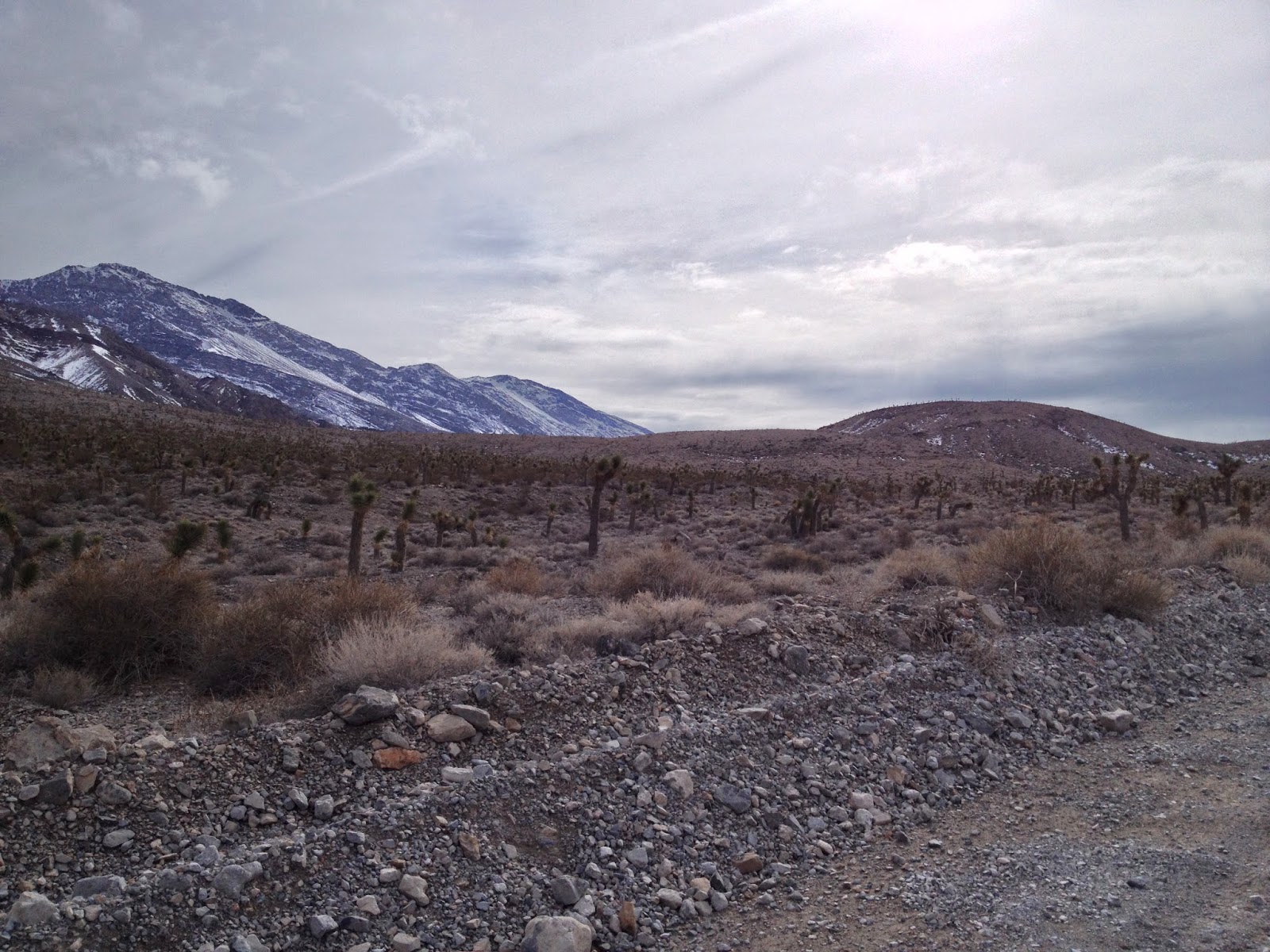 At 3700 feet nestled between the Cottonwood and Last Chance Mountains is a desolate playa of cracked mud, speckled with rocks and punctuated by a large granitic island, the Grandstand, one hundred seventy feet above the flat expanse. At this north end of the kidney-shaped playa there is little other than this monzonite boulder pile. It makes for good fun and cool pictures but otherwise is of little attraction. This is where most crowds accumulate on busy weekends as well.
At 3700 feet nestled between the Cottonwood and Last Chance Mountains is a desolate playa of cracked mud, speckled with rocks and punctuated by a large granitic island, the Grandstand, one hundred seventy feet above the flat expanse. At this north end of the kidney-shaped playa there is little other than this monzonite boulder pile. It makes for good fun and cool pictures but otherwise is of little attraction. This is where most crowds accumulate on busy weekends as well.
At the south end of this lakebed are the bulks of the rocks that pepper the mud. However, something is unusual about these rocks: they lie at the end of tracks in the mud the same size as the rock. These rocks move across the playa when no one is looking. To date no one has seen the rocks move, and countless people believe that magnetic vortexes or some other oogie boogie force is at play here, but the reason is rather simple.
The park service sign at the south end parking lot states that the rocks are blown across the playa in high wind when the playa is wet in the wintertime or after a summer storm, but it's more likely something different is moving the rocks. During the winter, temperatures at the alpine Racetrack frequently dip below freezing, and the playa often holds water after storms. At my last visit, over a foot of water lye at the south end, while a foot of snow lay at the north end around the Grandstand. When the playa contains water at the south end where the water is, and temperatures drop below freezing, ice forms on the surface. When the wind blows across this part of the Racetrack, it hits a ridge and swirls around in odd directions. Thus, the ice is moved, carrying rocks with it. Varying wind speed and water depth affect which rocks are moved.
To reach the Racetrack one must drive a 22 mile dirt road that is a renowned tire shredder. It is not recommended for street vehicles and it takes forever to drive the long road. It is for This reason I try to avoid the racetrack except for certain circumstances. On the way there one passes the unusual and fun Teakettle Junction, where people have been leaving teakettles for decades, sometimes with comments and contacts. The park service cleans it off occasionally so it doesn't get overcrowded.
To wrap it up, the racetrack is a fun day visit, but only if one has the will and the right vehicle. It's a wonderful experience to visit there on a day when it's not crowded.
Sailing Stone
Drunken Rock
The Racers
This is the ridge most of the rocks originate from. They fall off this fragile slope and into the mud, where they move across the flats.
Looking across at Ubehebe Peak
The Grandstand
Myself at the top
Alone
That is the high point of the Grandstand, which I would not consider climbable.
This was a crowded day. Presidents Day weekend, when we were here, is the most crowded day in Death Valley each year.
These next photos are of the last trip to the Racetrack, on Thanksgiving Day in 2013. We had heard there was several feet of snow from a storm prior to our trip, so we decided that it was a must-see, the Racetrack in snow.
Approaching a snowy Tin Mountain.
Racetrack Valley. This road, as visible, is extremely washboarded.
Teakettle Junction.
The glint below the mountains is the Racetrack Playa.
That is snow and water out by the Grandstand.
Reflecting
Symmetry
The hexagonal pattern in the mud is even visible under the water.
Racetrack Snowman.




































No comments:
Post a Comment